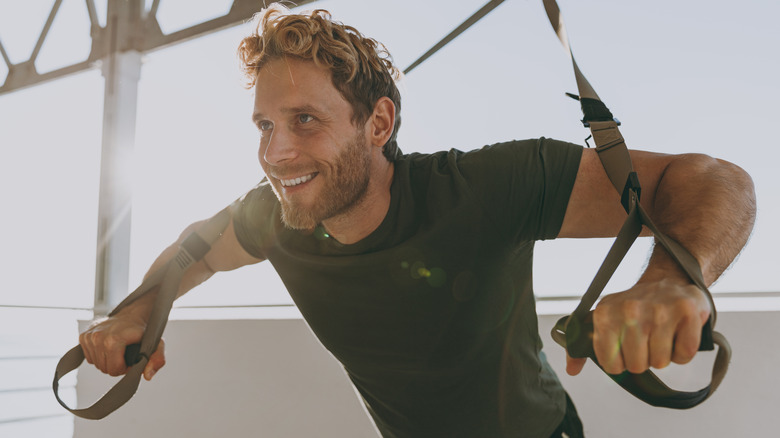The Real Health Benefits Of Using Suspension Trainers
You might have seen them hanging from high bars at the gym. Maybe you wondered why someone would do push-ups with their hands suspended in ropes. According to the IDEA Health and Fitness Association, these suspension trainers can give everyday exercises like push-ups or planks a little more challenge because you're engaging other muscles to keep you steady. They also provide greater functional movement.
The simplest suspension trainer might be a swing set, where you can hold onto the side ropes or the bottom of the seat to do pull-ups or planks. Some suspension trainers attach to a single anchor point such as a high bar, tree, or the back of a door. These can fit into your suitcase, which means you can take them on the road for a portable workout. Others have two or more places to attach, which gives you a lot more variability in your workout.
Suspension trainers for different needs
Suspension trainers can benefit people with various needs. According to a 2021 study in the World Journal of Clinical Cases, suspension trainers can help rehabilitate patients recovering from knee surgery. The study found more improvements in hamstring and quadricep strength using suspension trainers than using a traditional training protocol.
If you're looking for a more intense workout for your core, suspension trainers can help. A 2022 study in the Journal Prevention and Rehabilitation found that planks, push-ups, and hip bridges using a suspension trainer activated the core muscles significantly more than doing the exercises on the floor. However, the researchers noted that these core exercises aren't for injured or novice exercisers.
Suspension trainers can also be helpful for older adults with limited training. A 2020 study in the European Journal of Applied Physiology tested the effectiveness of suspension training exercises versus traditional resistance training. After 12 weeks of training, those who exercised with the suspension trainers saw improvements in muscle mass, strength, and functional fitness.

